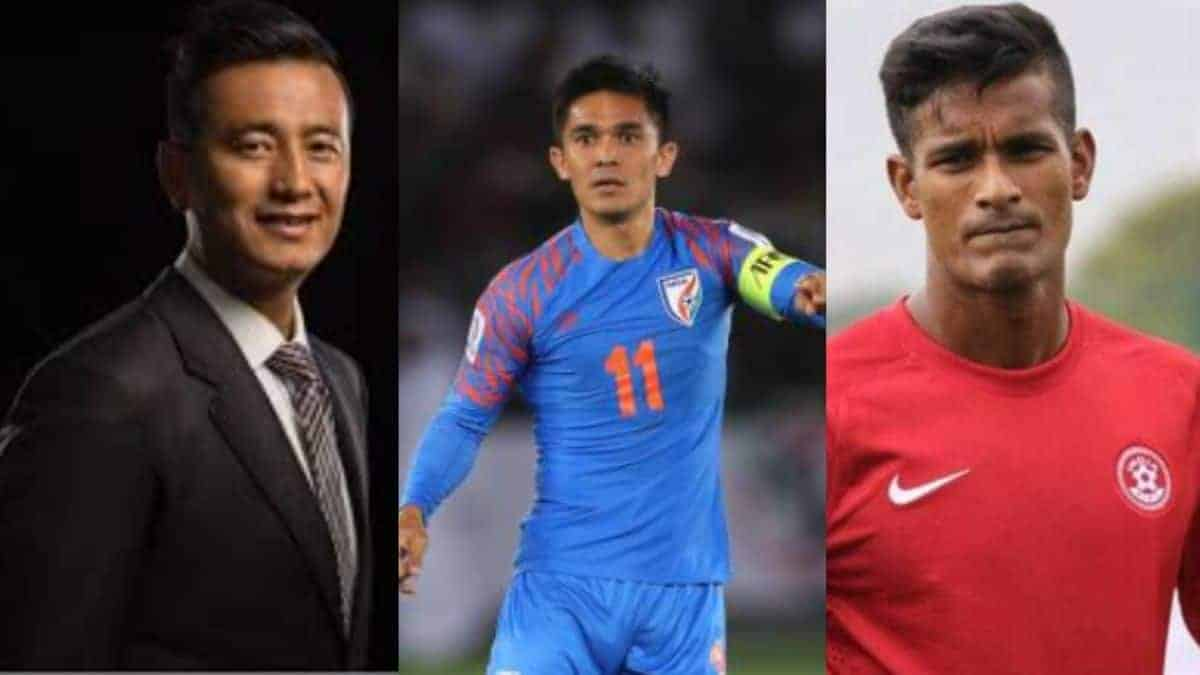Top Indian footballers who received world recognition

A lot of stars have made the nation proud by flying the national flag offshore.
In Indian football, spotting a domestic player succeeding outside the country is rare, with only a handful of players getting the chance to play in Europe or in another superior league. Foreign clubs have been reluctant to sign Indian players due to a lack of exposure for the sport and a low FIFA ranking.
There are still some rare gems that manage to secure game time at foreign clubs. Below are five high-profile Indian players who played overseas:
Gurpreet Singh Sandhu
Gurpreet Singh Sandhu might be the last Indian player to play abroad, but he’s also arguably the most successful due to his superior level of experience from his travels. In 2014, Sandhu signed a contract with FC Stabaek after establishing himself at East Bengal. He made his senior debut for them in 2015 after spending his first year adjusting to the conditions and learning the trades of European football. He appeared in the Norwegian Football Cup for them in 2016.
The shot-stopper also made his Norwegian league debut that year, becoming the first Indian to play in a top division league in Europe. But his crowning moment came on 30 June 2016, when he became the first Indian player to play in a UEFA Europa League qualifying match for Stabaek. Despite returning to India in 2017, he has gained valuable experience in Norway that has helped him remain the best goalkeeper in India for the past several years.
Sunil Chhetri
In the middle of his career, Sunil Chhetri moved overseas in an attempt to gain a reputation as a cornerstone of Indian football. Chhetri had to opt for a move to MLS side Kansas City Wizards in 2010 after a potential move to English side Queens Park Rangers was rejected because India did not rank among the top 70 of the FIFA rankings. He played for them in a few preseason games, including a match against Manchester United.
In 2012, he had another chance to play abroad when Sporting Lisbon signed him, but he returned to India after a few months. While playing for their reserves, he impressed during a brief stint. A few months later, Chhetri signed for Bengaluru FC after returning to India.
Bhaichung Bhutia
In order to attain prominence in Indian football, Bhaichung Bhutia had to work hard, but once he had the platform to soar, the striker’s name was well known beyond the country. He was renowned for his work with East Bengal in the 1990s, before he was offered a contract by Bury FC of the English League Two. The Manchester-based side eventually signed him after trials with teams such as Aston Villa and West Bromwich Albion. In three seasons, Bhutan played 37 times for them, scoring a few goals and producing some impressive performances.
The club was placed into administration in 2002, and in his final season abroad, he returned to India to play for Mohun Bagan. After a successful loan campaign, he again played in Malaysia for MK Land FC in 2005.
Mohamed Salim
Muhammad Salim played for the Mohammedan Sporting team which dominated Kolkata football in the 1930s at a time when Indians played football barefoot. His coaching helped the Black Panthers win a flurry of titles, including the Calcutta Football League for the first time in their history. His brilliant ability to dribble past opponents and fool defenders drew attention from elsewhere, as the Chinese Olympics team invited him to play a few friendlies in 1936.
Salim’s relative encouraged him to travel to Europe to seek out better opportunities after impressing in the first game. Celts FC initially laughed off the idea of a barefooted amateur Indian player being able to play for them. Salim’s footwork and ability with the ball during his trial, however, led to the club offering him a professional contract. Unfortunately, the winger soon became homesick and returned home despite Celtic offering to organize a charity match for him and giving him 5% of the gate receipts. The winger also turned down an offer from a German club.
Subrata Paul
Subrata Paul started displaying his potential as a youngster when he impressed for East Bengal, where he was a graduate of Tata Football Academy. He earned a good reputation for himself as a solid shot-stopper with his incredible reflexes between the sticks and was dubbed “The Indian Spiderman.” His work was so well-known at one point that he was signed by then Danish top flight club FC Vestsjaelland.
Even though he only played for their reserves, Paul gained valuable experience in a competitive environment as the first Indian goalkeeper to play abroad. He also returned a much more mature, stronger goalkeeper who is still going strong in the Indian Super League.


